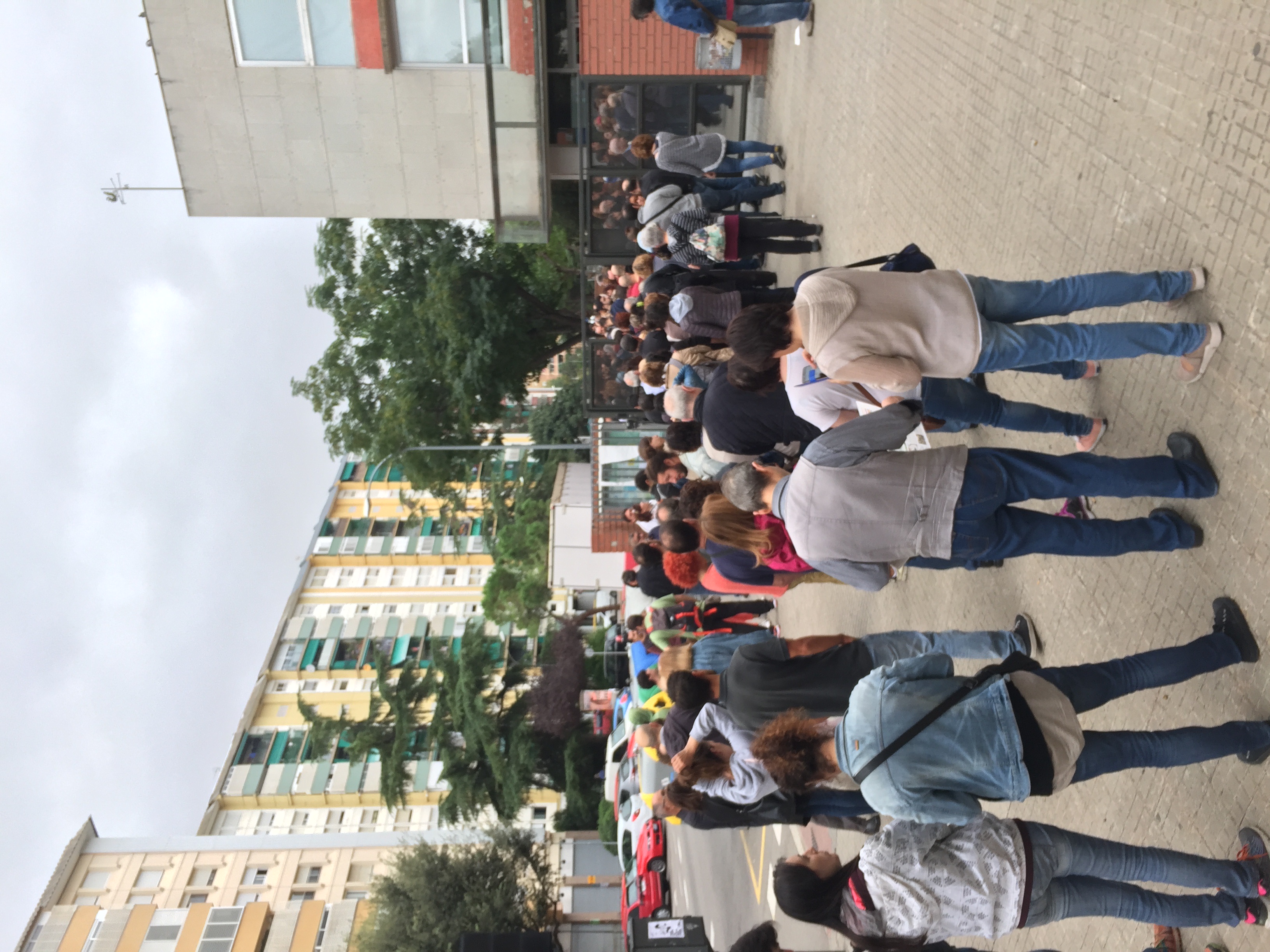Two years ago this morning, I got up at about 5:00 am and made my way to the Institut Banús, 15 minutes walk from our house in Cerdanyola del Vallès. By the time I arrived, there were several dozen people milling around outside the school. I spotted our downstairs neighbor, Isabel, who had been there all night. She told me that there were more people inside the school. Everything was ready.

Those of us who waited outside the school were there with a single shared purpose: to protect our local polling station. Protect it from violent attacks. Protect it from the people who wanted to stop that day from happening. Never in my life have I experienced such a sense of solidarity. That magical, empowering feeling of joining together with friends, neighbors and strangers alike to make a shared dream reality.
It was October 1st, 2017 and we were determined that Catalonia’s referendum on independence would go ahead, despite it having been declared illegal by the Spanish government and courts. I wrote more about that day in one of my last posts, a few weeks after the referendum happened.
So what has happened since then? Too much to say, really. A declaration of independence, immediately suspended and later reactivated, and all the while, the Spanish flag flew over the Palau. And Spanish police helicopters hovered over Barcelona.
Our legitimate government, unable to carry out its promise of an independent republic was deposed under article 155 of the Spanish constitution, and then locked up in jail or forced into exile. Leaders of civic organizations and the speaker of the Catalan parliament were locked up too (the latter for allowing a debate to take place, which is sort of what parliaments are for). Spain established direct rule in Catalonia for the first time since the 1970s. Elections were called, strikes were held, a pro-independence majority was returned in the Catalan parliament… but the “beheading” of the political movement, as Soraya Sáenz de Santamaría described it, had tangible effects. The new president supports independence. That’s about the only good thing I can say about him.
This is a profoundly difficult and painful moment for the entire independence movement. Instead of working to implement the republic, we spend our time discussing the next Spanish national elections – should people vote? Who should they vote for? It’s almost ironic that at this nadir, the most unifying event that could happen was the sudden dawn raids and arrests of 9 activists in the Committees for Defense of the Republic (CDRs).
The arrests, in Mollet, Sabadell, Santa Perpètua and Cerdanyola, have suddenly galvanized the movement. Because no-one believes that our fellow activists would turn down the path to violence, an idea which is completely anathema to the modern Catalan independence movement.
Edit on October 24, 2019: it was confirmed today that none of the CDR activists were in possession of any explosives. The whole thing looks like it was a media show.
There’s a real sense that things are a lot closer to home now: it used to be people we’d seen on TV and maybe voted for, who were getting locked up. Then it was innocent activists like Tamara Carrasco, not allowed to leave her hometown under court order for a year, before the charges against her were quietly dropped. Now it’s friends of friends who are getting arrested, people we’ve stood near to in demonstrations. People we know.
But the feeling of solidarity lives on, despite party divisions and political maneuvers. When the sentences for our political leaders are announced, we will respond with more civil disobedience, more solidarity and more certainty than ever that we have the right to build our republic.